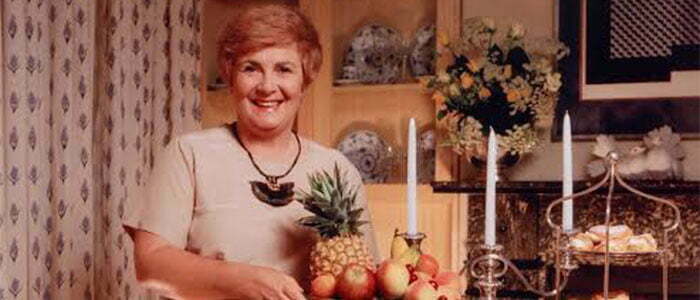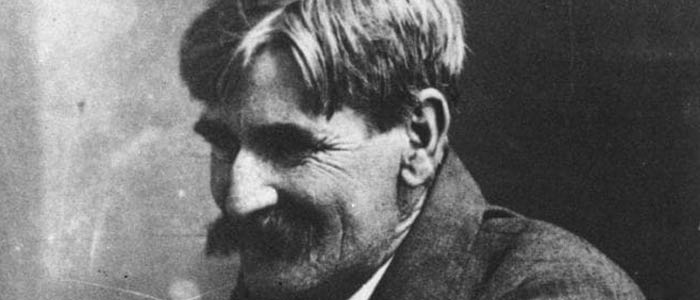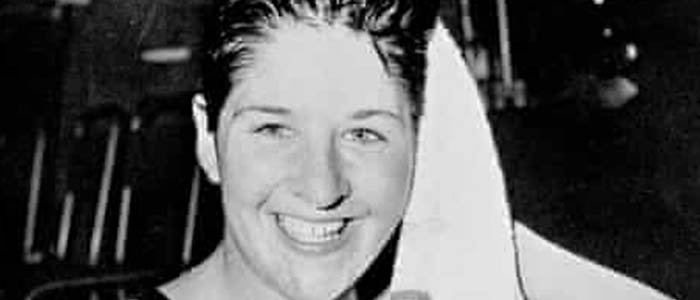Sydney’s Inner West is – and has always been – home to many exceptional men and women who have made their mark on Australia’s artistic, sporting and civic life, as well as the international stage. Meet some of our most noteworthy local residents – in no particular order – whom we can proudly claim as our own.


Image by Lewis Morley via National Portrait Gallery
Margaret Fulton OAM
Beloved by generations of home cooks, Margaret Fulton, who died aged 94 in July this year, was responsible for revolutionising the way we cooked, in particular, introducing Chinese and European ingredients and cooking techniques to a post-war Australia. Born in Scotland, she spent much of her life living in Balmain, when she wasn’t travelling the world discovering new cuisines and ingredients and introducing them to an enthusiastic audience. From the mid-1950s, she wrote recipes for Woman magazine, then Woman’s Day, where former editor Nene King described her as “the original Masterchef”. The Margaret Fulton Cookbook, first published in the late 1960s, has since sold more than 1.5 million copies (and counting). It is still a kitchen-shelf staple in countless homes around the country. Fulton was awarded the Medal of the Order of Australia in 1983, and was added to the list of Australian Living Treasures by the National Trust in 1998. Her legacy continues, with her daughter, Suzanne Gibbs, and two grand-daughters, Kate Gibbs and Louise Keats, all successful food writers in their own right.


Image by Olive Lawson via The Daily Telegraph
Henry Lawson
One of Australia’s most beloved writers and poets, Henry Lawson lived out his final years at the home of his housekeeper, companion and fellow poet, Mrs Isabel Byers. Lawson is a hero of the ‘bush poetry’ genre, along with his contemporary, Banjo Paterson. Born in 1867, in Grenfell, NSW, Lawson’s life was primarily a story of struggle and hardship. He became deaf at the age of 14, which lead in a great part to his love of reading, as he found it hard to follow classroom teaching at school. A teacher at his school in Mudgee introduced him to poetry, as well as some of the great Australian novels, such as Marcus Clarke’s For the Term of His Natural Life. Lawson’s first published poem, ‘A Song of the Republic’, appeared in The Bulletin in 1887, and his first book of short stories, While the Billy Boils, in 1896. On his death in 1922, Henry Lawson was the first ‘ordinary’ Australian to be given a NSW state funeral, attended by the then prime minister Billy Hughes (another Inner West luminary) and the eventual premier of NSW, Jack Lang. A monument dedicated to Lawson was erected in 1926 outside Abbotsford Public School (which also boasts a Henry Lawson Community Hall, completed in 2002) opposite his long-since demolished, home. Later, a bronze statue of Lawson accompanied by a swagman and his dog was erected in The Domain, Sydney.


Image by Getty Images via The Guardian
Dawn Fraser AC, MBE
Balmain born and bred, Dawn Fraser was the youngest of eight children in a poor, working-class family. Spotted in her early teens by Sydney swimming coach Harry Gallagher while she was swimming at her local sea baths, Fraser went on to win three consecutive gold medals in freestyle at the Summer Olympics, in Melbourne in 1956, Rome in 1960 and Tokyo in 1964. She is one of only three swimmers in the history of the Olympics to have achieved this amazing feat, and her record of swimming 100 metres in under one minute remained unbroken from 1962 to 1972, eight years after she had retired. In 1964, she was named Australian of the Year, and the now heritage-listed sea baths in Balmain where it all began was renamed Dawn Fraser Swimming Pool that same year. Among her many other accolades, Fraser was awarded an MBE in 1967, and made an Officer of the Order of Australia in 1998. She has also been a swimming coach, spent three years as an independent representing Balmain in the NSW Legislative Assembly, and was a board director of the Wests Tigers NRL club. Unsurprisingly, she still proudly calls the Inner West her home.
Sir Thomas Henley
The alderman and four-time mayor of Drummoyne, Sir Thomas Henley, was largely responsible for the amalgamation of Five Dock and Drummoyne Councils in 1902. Born in 1860 in Wiltshire in England, Henley worked as a farmhand and plasterer before he migrated to Sydney in 1884, where he married Charlotte Smith in 1886. Over the course of his early life in Sydney, he worked first as a plasterer, but began buying land and building properties in Balmain, Five Dock, Petersham and Drummoyne, where he built the grand ‘Tudor House’ (since sadly demolished) on College Street for himself in the mid-1890s. Among his civic achievements, Henley oversaw the extension of the tramline to Drummoyne in 1902 and electricity supply introduced in 1910. He was a member of the NSW Legislative Assembly representing Burwood from 1904 until 1935, and gained something of a reputation for his bombastic style!
Rose Byrne
Internationally renowned film and television actor Rose Byrne was born in Balmain in 1979, and went to school at Balmain Public School and Hunters Hill High. She started taking acting lessons at the tender age of eight years old, at the Australian Theatre for Young People, and later studied for an arts degree at Sydney University. She spent time honing her acting craft at the Atlantic Theater Company in New York, founded by David Mamet and William H Macy. Her first film role came at the age of 13, in Dallas Doll, and since then she has worked with many of the finest actors in Hollywood, Australia and the UK, including Brad Pitt, Peter O’Toole, Glenn Close, Jude Law and Melissa McCarthy. This down-to-earth Balmain export who has long been celebrated not only for her comedic talent, but her beauty and style, now lives in New York.
Peter Dodds McCormick
The gentleman who composed our national anthem in the late 19th century, ‘Advance Australia Fair’, is another Inner West hero. Peter Dodds McCormick was born in Scotland in the mid 1830s and, after completing a joinery apprenticeship, migrated to Sydney in 1855 with his wife. Here, he worked as a joiner while pursuing his love of music with his involvement in various musical societies. He became a teacher and eventually principal at St Albans School and then headmaster of Five Dock Public School. McCormick was fiercely patriotic (to Scotland as well as his adopted home). He composed a collection of popular patriotic and Scottish songs. Among them was ‘Advance Australia Fair’, first sung at The St Andrew’s Day concert of the Highland Society in 1878, and acclaimed by The Sydney Morning Herald as ‘bold and stirring’ and ‘decidedly patriotic’. He later published the music and four verses under a pseudonym, Amicus, and it was sung by a choir of some 10,000 voices at the inauguration of the Commonwealth of Australia on 1 January 1901. McCormick was later awarded the princely sum of 100 pounds for his patriotic composition in 1907. A plaque commemorating McCormick can be found in the grounds of St Albans Church in Five Dock.
Do you know any other famous residents who we’ve missed? We’d love to know any other local identities that we can feature.



